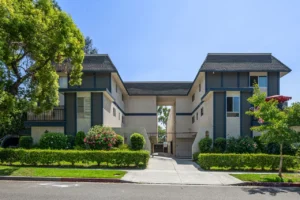‘Green’ Flooring Adds Value, Not Allergens
Green Flooring Adds Value to Your Building, not Allergens
Submitted by Louisa May
 You’ve probably heard it said that “the harder the surface the cleaner the floor.” It’s true that clean floors free of dust and pet hair are better for everyone, but for individuals with allergies or chemically sensitive immune systems, the most important factor is high or low VOC’s. Volatile organic compounds are in many household products and building materials. They often evaporate quickly into the air. but just because you can’t smell it, that doesn’t mean a VOC vapor isn’t there.
You’ve probably heard it said that “the harder the surface the cleaner the floor.” It’s true that clean floors free of dust and pet hair are better for everyone, but for individuals with allergies or chemically sensitive immune systems, the most important factor is high or low VOC’s. Volatile organic compounds are in many household products and building materials. They often evaporate quickly into the air. but just because you can’t smell it, that doesn’t mean a VOC vapor isn’t there.
Pile carpets and carpet tiles absorb allergens that even vacuum cleaners can’t eliminate. And carpets emit VOC’s as do the products used for installation, the adhesives and padding.
However,the Carpet and Rug Institute does have a “Green Label” program. To qualify for this rating, carpets are submitted by manufacturers for independent testing and must give off little VOC vapors and meet certain emission standards for styrene, 4-PCH, and formaldehyde. When choosing carpet, look for a label on carpets with the initials ˜CRI inside a house icon. And have your carpet tacked down instead of glued to lower the VOC’s.
Formaldehyde is one VOC that may be present in large concentration indoors, particularly in pressed wood products. According to the US Consumer Safety Commission, it is better to use “exterior grade” pressed wood products since they have lower VOC levels ,and in particular they contain phenol resins, not urea resins. Urea resins contain formaldehyde, a human carcinogen.
Many “green” manufacturers of wood flooring have created pre-finished woods that reduce the level of VOC’s coming into the home:
- Bamboo has become a popular choice for flooring since it is relatively low cost ($1.85 to $3.06- builddirect.com) and is comparable to oak in terms of stability. Bamboo can be grown back in three to five years, versus fifty years for a full grown oak. However, it’s important to make sure that the bamboo wood you select does not use formaldehyde as an adhesive or in a high VOC -coated finish.
- Yanchi brand bamboo flooring has an aluminum oxide finish that meets strict European toxicity standards.
 The material used under the floor is important, too. Standard flooring felt might contain chemical fungicides or urea formaldehyde. Particle board is often used as subflooring and contains high VOC’s. A “green” alternative is wool flooring felt or cork. Cork is a biodegradable flooring material, as is bamboo, but cork tile is not recommended for basements because of the potential for mold.
The material used under the floor is important, too. Standard flooring felt might contain chemical fungicides or urea formaldehyde. Particle board is often used as subflooring and contains high VOC’s. A “green” alternative is wool flooring felt or cork. Cork is a biodegradable flooring material, as is bamboo, but cork tile is not recommended for basements because of the potential for mold.
Stone and ceramic tiles are free of VOC’s and are attractive and durable. Marmoleum is a natural linoleum alternative and truly a green building material made of sawdust, wood flour, limestone and jute, but it uses linseed oil as a binder, which is a common allergen to those with chemical allergies.
So just because a product is “green” doesn’t mean it is always an appropriate choice. But green flooring usually is:
- safer for the occupants
- made up of recycled material or most possible to recycle
- longer lasting than conventional flooring
Landlords can improve the environment by choosing “green” materials for their buildings. By marketing “green” choices, landlords can also attract a wider range of tenants. Everybody wins!
American Apartment Owners Association offers discounts on products and services related to your commercial housing investment, including tenant debt collection, tenant background checks, insurance and financing. Find out more at www.joinaaoa.org.
To subscribe to our blog, click here.













 Accessibility
Accessibility